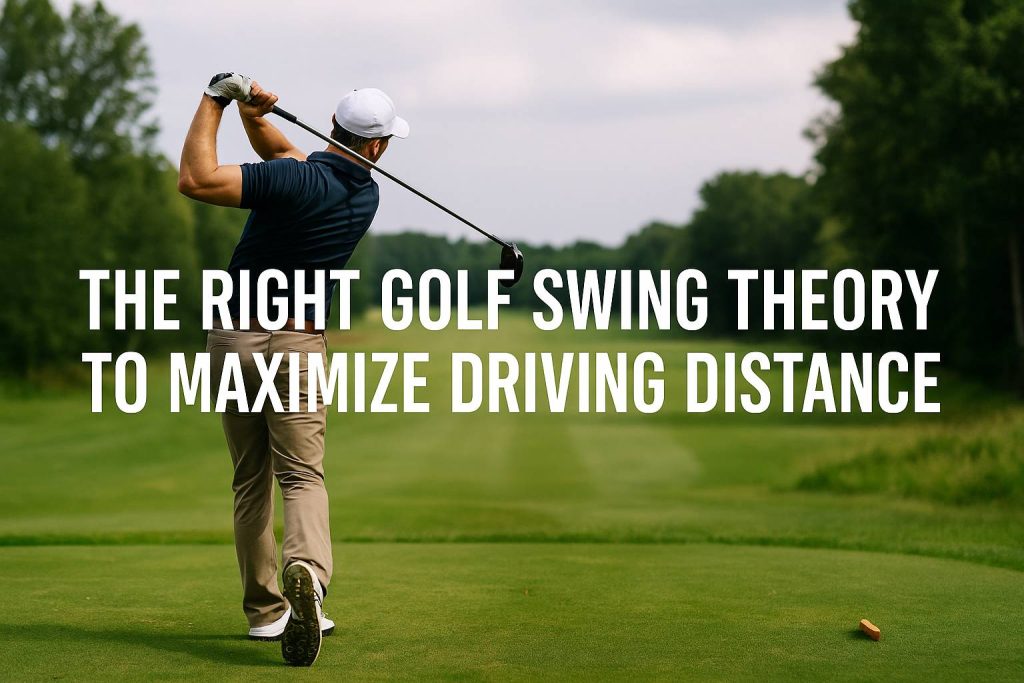In the world of golf, the quality of a shot isn’t determined solely by how hard a player swings the club. In reality, to generate long and accurate shots toward a target, golfers must understand proper swing theory. For beginners, learning swing techniques from the start is crucial to avoid foundational mistakes that become harder to correct once they’re ingrained. Even seasoned golfers need regular swing theory training to maintain their performance.
According to GoGolf, swing theory in golf involves more than just striking the ball with the club. It is a complex motion that harmonizes upper and lower body movement, footwork, balance, rhythm, and even emotional control during a shot. This is why professional instructors always stress mastering swing fundamentals before delving into advanced strategy.
Ideally, swing training should be conducted under the guidance of a certified golf instructor. Coaches can help identify posture errors, inefficient swing patterns, and offer tailored advice based on each player’s physical movement characteristics. This way, you can build a swing mechanism that suits your body while still aligning with ideal golf biomechanics.
Understanding the Basics of Swing Theory for Longer Shots
Fundamentally, a golf swing is similar in motion to a baseball swing. The key difference lies in the position of the ball. In baseball, the ball is pitched and struck at waist height, whereas in golf, the ball is stationary on the ground or tee. Despite that, both sports rely on the principle of energy transfer through effective body rotation to generate powerful shots.
To truly maximize driving distance, players must not rely solely on upper arm strength. Using the arms too dominantly in the swing often results in stiffness, fatigue, and an increased risk of injury, especially in the wrists and elbows. Modern golf swing theory emphasizes that true power comes from the combined rotation of the hips, shoulders, spine stability, and solid footing.
During the backswing (pulling the club back), the shoulders rotate against the resistance of relatively static hips, generating elastic potential energy in the core and back muscles. When transitioning to the downswing, that stored energy is explosively released, accelerating the clubhead into the ball. This rotational kinetic chain—not arm strength—is the true power source in golf.
Understanding this foundation allows your body to move in harmony during the swing. The result isn’t just greater distance, but also better accuracy, since your motion becomes more repeatable and controlled.
All the best courses, one app. Download GoGolf today!
Balance: The Cornerstone of Golf Swing Theory
One of the most critical elements in swing theory is balance. No matter how strong or flexible a golfer is, it’s all in vain without stable posture. Good balance ensures that the energy generated by rotation is transmitted effectively to the clubhead and, ultimately, to the ball.
To achieve optimal balance, start with a solid stance. Place your feet slightly wider than shoulder-width to distribute your body weight evenly. This helps absorb the centrifugal forces during fast swings. Slightly flex your knees to avoid rigidity. Bent knees act like shock absorbers, cushioning sudden shifts and adding power during weight transfer to the lead leg.
Keep your spine straight but relaxed, and maintain loose shoulders for better rotational flow. Throughout the swing, weight distribution should shift dynamically. At address (the setup position), weight is balanced between both feet. At the top of the backswing, around 70% of the weight should shift to the back foot. Then at impact, about 75% shifts quickly to the front foot.
Balance, therefore, is not merely about not falling over during the swing—it’s about ensuring that your body stays controlled, consistent, and powerful. It’s no surprise that professional golfers dedicate hours just to refining this aspect, knowing it’s the base of an effective swing.

The Art of Letting Go for Maximum Distance
A common mistake among golfers—beginners and veterans alike—is over-controlling their swing mechanics. Many try to manually guide every part of the club during the swing, leading to stiff, unnatural movements that disrupt rhythm and power.
Modern swing theory introduces the concept of “let the physics work.” This means trusting your training and allowing your body to move fluidly. Professionals often say, “swing with feel,” focusing more on ball flight visualization than obsessing over angles or wrist positions.
Grip pressure is another frequent issue. Many beginners grip the club too tightly, thinking it produces more power. In reality, an overly tight grip restricts wrist hinge and flow. The grip should be firm enough to prevent the club from flying out but soft enough to allow natural arm and wrist rotation.
When golfers learn to let go and trust their mechanics, their swings often become smoother and more powerful. This happens because the stored energy from hip and shoulder rotation is released unhindered. Letting go is about allowing your body and momentum to do what they’ve been trained to do, aided by physics—not brute force.
Optimizing Body Movement—Not Just the Arms
One of the biggest misconceptions in golf is that the power of a shot comes mainly from the arms. While arms do control club path and angle, real power originates from full-body coordination, particularly the torso.
In proper swing theory, the motion starts from the ground up. During the backswing, the hips rotate and store energy. In the downswing, the hips initiate the motion toward the target, followed by shoulder rotation and finally arm extension. This “sequence of motion” is crucial—if the shoulders move before the hips, energy is lost and the swing weakens.
The correct order creates a whip effect—hips lead, followed by the upper body, then the arms and hands. At the point of impact, the clubhead can exceed 160 km/h in professional swings. This speed is unachievable if relying on the arms alone.
Footwork is also vital. Feet act as stabilizers, helping the body maintain grip during explosive motion. This is why golf shoes feature deep traction patterns, allowing stability even on uneven or wet terrain.
By training the entire body to work together—hips, core, shoulders, and feet—golfers not only increase distance but also reduce the risk of injuries. Practicing under a coach ensures your biomechanics stay aligned and efficient.
Integrating Balance, Fluidity, and Rotation for an Optimal Swing
In summary, the theory behind maximizing your golf swing distance combines three essential elements. First, solid body balance from setup to follow-through. Second, the ability to relinquish excessive control and let physics guide your motion. Third, full-body rotational synergy to unleash maximum energy at impact.
Understanding the theory is only the first step. Consistent implementation and repetition build muscle memory, transforming sound swing mechanics into instinctive motion. This reduces mental clutter during gameplay and enhances performance.
With regular practice and periodic evaluations with a golf instructor, every player has the potential to elevate their swing quality. In time, not only will you consistently hit longer drives, but you’ll also embrace the grace and philosophy of golf as a sport of skillful movement and strategic precision.
[ Follow our social media Account: GoGolf Instagram | GoGolf Facebook | GoGolf X ]











